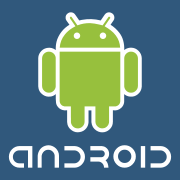

Microsoft has taken legal action against Barnes & Noble, and its Android manufacturing partners, with both the International Trade Commission and the US District Court of the Western District of Washington. The case against Barnes & Noble, Foxconn, and Inventec alleges that the Android-based Barnes & Noble Nook and Nook Color devices infringe on patents held by Microsoft.
A Microsoft on the Issues blog post by Horacio Gutierrez, Corporate Vice President and Deputy General Counsel, claims that this new litigation, combined with patents asserted in legal action taken against Motorola, makes 25 Microsoft patents allegedly encroached by Google’s Android OS. Gutierrez stresses that Microsoft is not patent trolling–pointing out that this is only the seventh patent case initiated by Microsoft in its entire 36-year history.

Microsoft has established an industry-wide licensing program to address patent infringement by the Android OS. Other Android device manufacturers–such as HTC and Amazon–have come to an agreement with Microsoft to pay licensing fees for the Microsoft patents in question. Gutierrez says in the blog post, though, “Unfortunately, after more than a year of discussions, Barnes & Noble, Foxconn and Inventec have so far been unwilling to sign a license, and therefore, we have no other choice but to bring legal action to defend our innovations.”
So, what exactly is Microsoft claiming Barnes & Noble and its partners are stealing from Microsoft patents in the Nook and Nook Color? Here is a summary of the patents in question sent to me by a Microsoft spokesperson:
Technologies that enable natural user interaction are key to the success of mobile devices.
• People also expect to be able to access command windows without interfering with the application’s main window, and to be able to tab through various screens to find the information they need. Microsoft’s patents enable the opening of a new, tabbed control window. (U.S. Patent No. 5,889,522)
Our technologies help speed up web surfing and keep users informed of download status.
• Surfing the web quickly is a key device feature. One of the patents in this case enables devices to show the content of a page even while the background is still rendering, allowing users to interact with the page more quickly. (U.S. Patent No. 5,778,372)
• Users also want to know the status of their downloads. A Microsoft patent provides information about download status on top of the content display. (U.S. Patent No. 6,339,780)
Our innovations facilitate users’ ability to interact with document and other e-content.
• The ability to select text is critical to working with documents. One of our patents enables users to select text, see what is selected via highlighting, and expand the selection in either direction as desired. (U.S. Patent No. 6,891,551)
• Users also want to annotate e-books and other documents. A Microsoft patent allows people to insert and review annotations without changing the underlying document, and to select annotations and be brought to the related portion of the document. (U.S. Patent No. 6,957,233)
Obviously, Barnes & Noble. Foxconn, and Inventec disagree that Android, or the Nook and Nook Color devices, infringe on these Microsoft patents. Otherwise, they would have already negotiated terms for licensing the patents in question.
It is interesting that Microsoft never challenges Google directly for the alleged patent infringement by its Android OS, but instead goes after the vendors that rely on it. There may be some legal intricacy I am not aware of that makes this strategy more practical. At face value, though, it seems like Microsoft is going after Google by proxy by challenging peripheral companies that lack the financial and legal might of Google.


